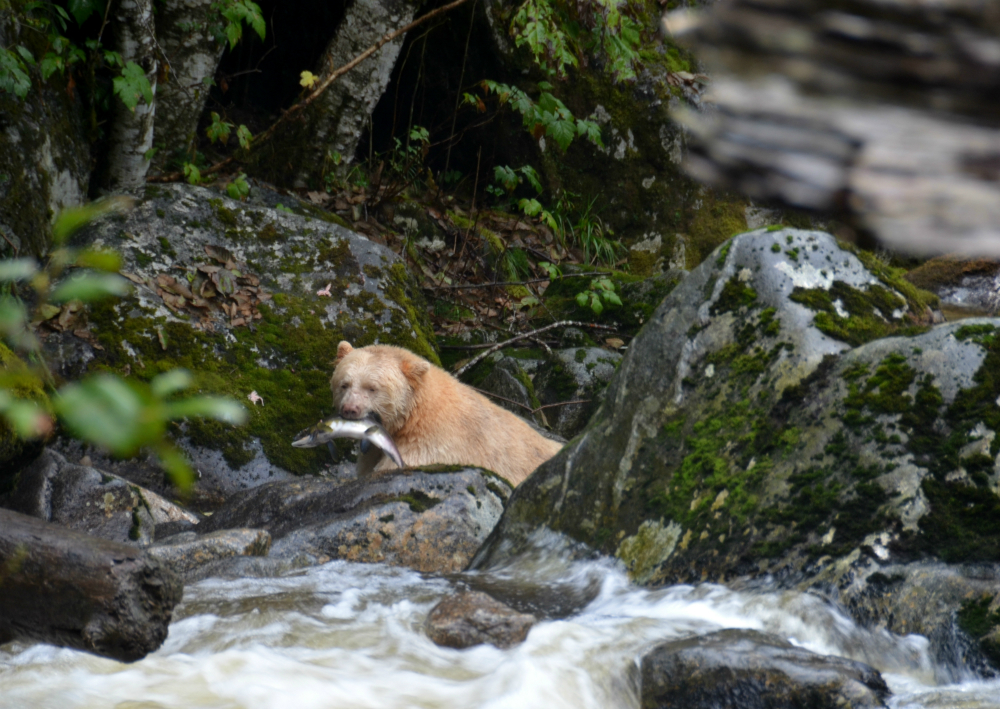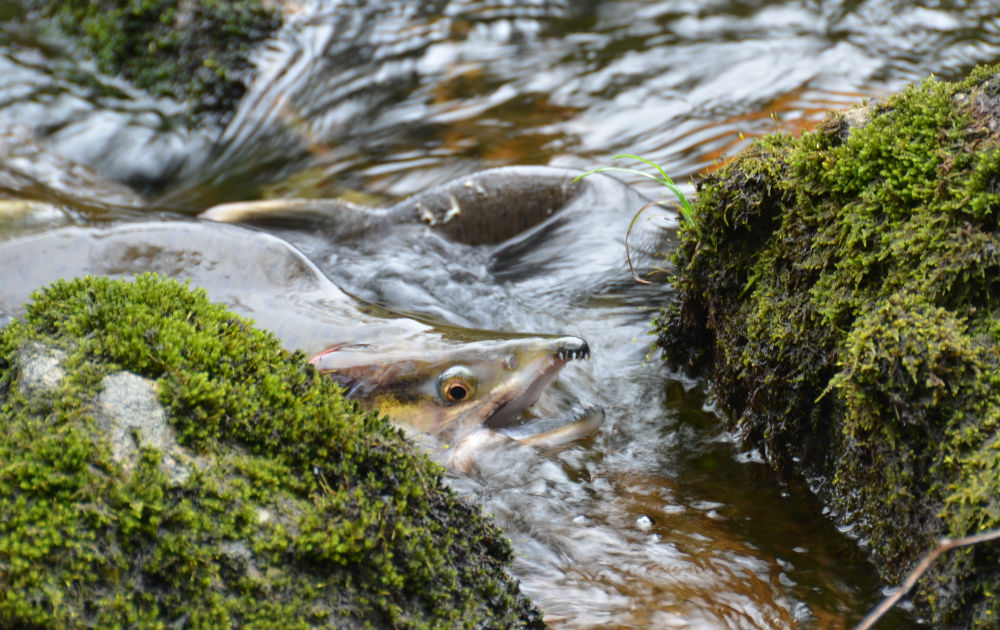Journey to the Great Bear (Day 2): Spirit bears, salmon, and the world that connects them
The spirit bear. One of the unique features of the Great Bear region. The spirit bear, or kermode, is a black bear born white, and this is the only place in the world it exists. It’s like Canada having its own panda bear. And its future is at risk because an oil spill directly threatens the salmon, and the rivers, and the forest, on which this animal depends for its very existence.
Today, we saw one. Following our Gitga’at guides, we viewed a spirit bear feeding in a creek on Gribbel Island. In fact, we were with him for about three hours as he foraged the narrow river for fish.
Salmon is integral to the ecosystem here. The bear (who our guides had nicknamed “Boss”) was fishing for Pink salmon. These fish, returning to the river of their birth to spawn in the gravel beds, feed the bear for its long winter’s sleep. Some estimates say a bear can gain up to 250 pounds in these two months. And if he doesn’t, he’ll starve. The salmon serve another ecological purpose too – they die after spawning and their remains, carried off by bears, wolves, and birds, fertilize the forest.
I have seen salmon runs before, but never in the wilderness like this. It’s impressive, and powerful. The determination of the salmon to swim against the powerful current, and to surmount rapids and waterfalls, is remarkable. But their success is also fragile. Debris from the forestry industry, for example, can easily cover the gravel bed of the streams and rivers in a way that prevents the eggs from having enough oxygen to grow into young salmon. It is why the Coastal First Nations and environmental organizations are so concerned about spills of diluted bitumen from the pipeline and from oil tankers travelling through the Great Bear Sea.
The forecast tonight: gale to storm force winds, with eight metre to ten metre seas.



